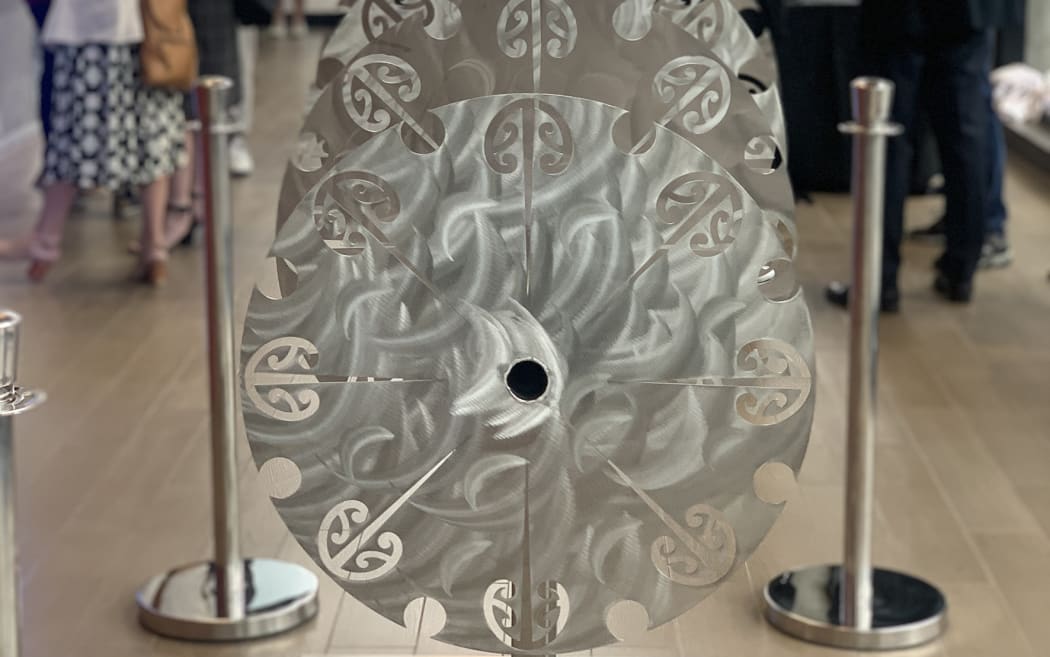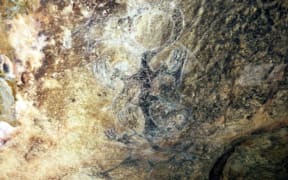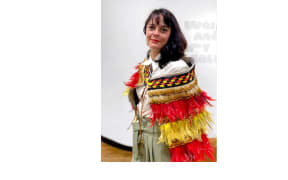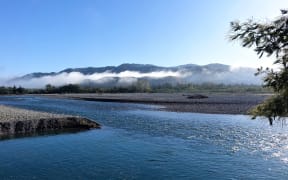
Rangitāne o Wairau launched Kōrero Tuku Iho to bring art and science to life through artworks created by Israel Tangaroa Birch. Photo: Rangitāne o Wairau
A new exhibition dedicated to a South Island iwi is hoping to teach visitors to Blenheim over summer about the seismic environment the iwi have lived in for hundreds of years.
Rangitāne o Wairau launched Kōrero Tuku Iho to bring art and science to life through artworks created by Israel Tangaroa Birch.
It comes almost a decade after NIWA and Rangitāne met to discuss a Māori myth which concluded the pūrākau was a "seismic tradition".
Massey University history lecturer Dr Peter Meihana said the exhibition was based on reinvigorating the legend of a taniwha.
"The pūrākau itself talked about a taniwha that resided at the base of Te Parinui o Whiti and would take the form of a wave that would then wash travellers into the lagoons and devour them later."
In 2014, geological research started at Wairau Bar, which showed it is likely about three tsunami events have occurred at Te Pokohiwi-o-Kupe over the past 2000 years.
Rangitāne o Wairau Kaiwhakaere matua Corey Hebberd said the art would be on display in the lobby of Rangitāne House for the coming year.
"This latest project is a continuation of work by Rangitāne to showcase the rich history and kōrero tuku iho of our unique region. As tangata whenua, Rangitāne is proud to showcase our region, to tell our stories and to inspire learnings from our past."
'Seismic risks'
NIWA regional manager Darren King said he hoped the iwi's past could teach others how to prepare for devastating natural disasters.
"We consider the pūrākau from Te Pokohiwi-o-Kupe to be a powerful medium to demonstrate precedents and stimulate community understanding and acceptance of co-seismic tsunami risks.
"We also consider it highlights responsibilities that we have to uphold our histories for past, present, and future generations."
Meihana also intended for the exhibition to teach students in the area about the iwi's past.
"What we're hoping to do over the summer, but also coming into 2023, is to get as many of the young Marlborough schoolchildren through the exhibition... we're hoping it's going to feed into the introduction of the new Aotearoa history in schools that starts in 2023."
Meihana hoped visitors would be able to appreciate Māori history could be told in different ways.
Birch said his role within the group was to create a bridge between the world of science and mātauranga Māori.
The artwork that he created for the exhibition includes kōwhaiwhai patterns.
During a visit to Omaka Marae in Blenheim, he connected the kōwhaiwhai found within the meeting house to the symmetry of diatoms, a type of microalgae.
These diatoms are found at Wairau Bar and may have been carried there by past tsunamis.




